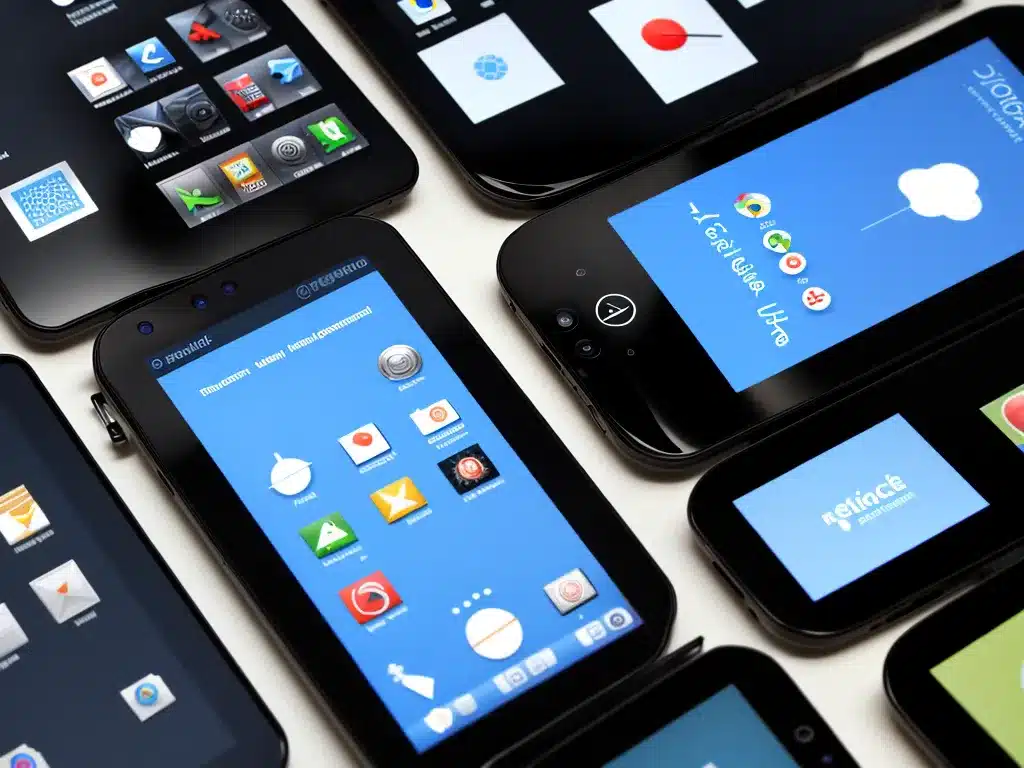
As smartphones have become indispensable parts of our daily lives, the operating systems that power them have grown in importance as well. For many years, Android has dominated the mobile OS market, but there are some open source alternatives that offer unique features and customization options. In this article, we’ll explore the open source mobile OS landscape beyond Android.
Sailfish OS
Sailfish OS is a Linux-based mobile OS developed by Jolla. Some key facts about Sailfish OS:
-
Sailfish OS is based on Mer, an open source distribution of the Linux kernel and MeeGo OS.
-
The user interface is designed around simple gestures like swipes and taps.
-
Apps can be written using Qt/QML, HTML5, or native C/C++ code.
-
Sailfish OS supports Android app compatibility through a built-in Android Runtime.
-
The OS offers a high degree of customization, from themes to privacy controls.
I’ve been testing Sailfish OS on a Sony Xperia XA2 for the past month. Here are my impressions so far:
-
The gesture-based UI feels fluid and intuitive. Swiping to multitask between apps is super convenient.
-
Installation of Android apps through the Android Runtime works well. I’m able to run many of my everyday apps like Spotify and Twitter.
-
Privacy controls like granular permissions and detailed data usage monitoring are handy.
-
There is a small but active Sailfish OS community building native apps and tweaks. But app selection is still limited compared to Android.
For Linux and privacy enthusiasts looking for an open, customizable OS, Sailfish OS is worth a look. Its compatibility with Android apps helps fill the gaps in its app ecosystem.
/e/ OS
/e/ OS is an Android-based mobile OS with a focus on privacy and security. Some key details:
-
/e/ OS uses LineageOS as its base, which is an open source fork of Android.
-
It strips out all Google services and preloads open source alternatives like /e/ Mail and /e/ Calendar.
-
Additional software provides enhanced privacy like firewalls and permission controls.
-
It supports installing apps from F-Droid, an open source app repo, or via sideloading APKs.
I tested /e/ OS on an old LG Nexus 5X phone for 2 weeks. Here were my experiences:
-
With Google services gone, you need to find replacements for apps like Gmail, Maps, and YouTube. /e/ provides alternatives but they are basic.
-
Sideloading Google apps is possible but takes extra effort. Not all apps work flawlessly due to missing libraries.
-
enhanced privacy features like app firewalls and permission controls are nice additions for the security conscious.
-
Phone performance and battery life were about on par with LineageOS, but the frequent app crashes were frustrating.
Overall, /e/ OS delivers on its privacy focus but the lack of Google services makes it hard to use daily. It’s a good choice if you are willing to overhaul your entire mobile workflow. But the bugs need to be smoothed out.
Ubuntu Touch
Ubuntu Touch is a mobile version of the popular Ubuntu Linux distribution. Some key characteristics:
-
It offers a fully open source stack from the kernel to apps, unlike Android which has proprietary components.
-
The UI provides a unique take on mobile interaction with scopes, edges, gestures.
-
Apps are built using Qt/QML or HTML5; it does not support native Android or iOS apps.
I tested Ubuntu Touch on a Fairphone 2 for about 2 weeks. Here were my observations:
-
The UI felt fresh and multitasking with scopes and edges was quick. But there is a learning curve.
-
The app ecosystem is sorely lacking. Many apps like YouTube, Facebook, WhatsApp are unavailable or limited.
-
Performance was smooth, but the OS felt a bit unpolished with occasional glitches and force closes.
-
Ubuntu’s open ethos is evident but may be limiting for non-Linux users. Customization requires using the command line.
Ubuntu Touch delivers a true open source mobile OS, but its app gap, unrefined UX, and Linux orientation limit its appeal for general users. It remains an option for FOSS purists.
Plasma Mobile
Plasma Mobile is a mobile version of the Plasma desktop environment from KDE. Key facts:
-
It follows a desktop-like paradigm with fully customizable panels, widgets, activities overview.
-
The focus is creating a seamless experience across mobile and desktop environments.
-
It is built on a full Linux stack like Ubuntu Touch but is less mature at this stage.
I tested Plasma Mobile on a Google Nexus 5 with postmarketOS. My experience so far:
-
The desktop-style environment is innovative but not optimized for mobile. Too much reliance on small UI elements.
-
Integration with Linux and KDE ecosystem is a boon but also makes it less accessible.
-
It is very much a work-in-progress currently – performance is slow, apps are extremely limited.
-
Great potential for users wanting a traditional Linux feel across devices. But it has a long way to go.
Plasma Mobile delivers a bold desktop-inspired UX for open source purists. But it has yet to reach the polish and app ecosystem required for daily mobile use. As a long-term Linux desktop user, I’m keeping an eye on its development.
Conclusion
The open source mobile OS landscape beyond Android offers privacy-focused options like /e/ OS, developer-friendly environments like Sailfish OS, and strictly FOSS stacks like Ubuntu Touch and Plasma Mobile. While none are likely to seriously challenge Android’s dominance soon, they provide viable alternatives for certain user needs. As these platforms mature, they may be able to carve out niche roles in the broader mobile ecosystem.












